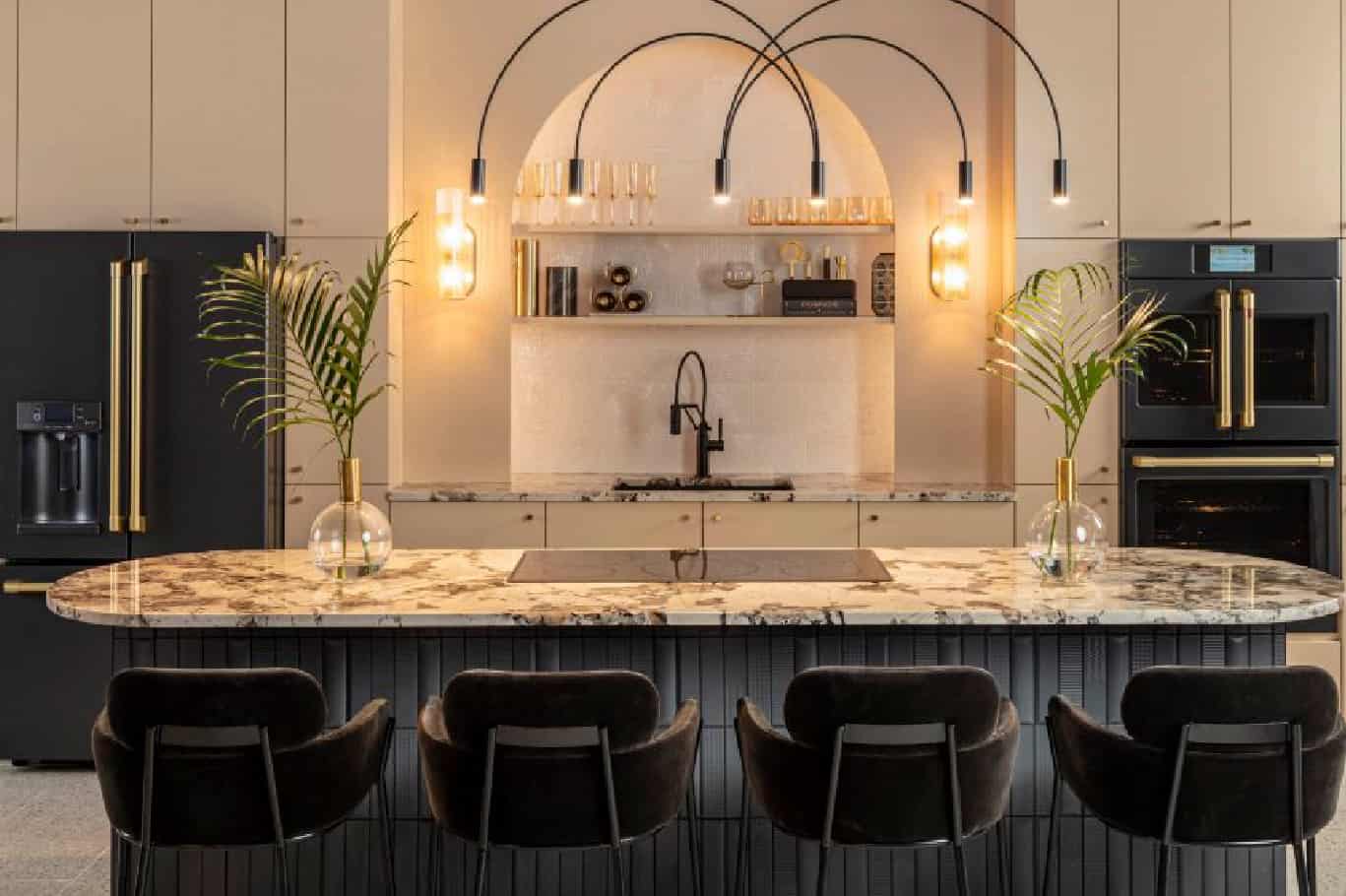Art Nouveau Vs. Art Deco Interior Design
When it comes to Art Nouveau vs. Art Deco design, many interior design enthusiasts find themselves captivated by the contrast between these two iconic styles. Though both emerged around the turn of the 20th century, they showcase vastly different aesthetics—one grounded in organic forms and the other in geometric patterns. Understanding the nuances of each can help you decide which style best suits your home.
Understanding the nuances can help you decide which style better suits your space. Both can transform interiors into stunning, inviting areas brimming with character.
What Is Art Nouveau Interior Design?
Art Nouveau is an artistic movement that flourished between the late 19th and early 20th centuries. Known for its organic forms and intricate patterns, this style aimed to bring art into everyday life. This style drew inspiration from the natural world, incorporating organic motifs and curved lines. Common motifs included nature motifs, floral designs and the female form.
The Beginning of Art Nouveau
Art Nouveau emerged in the mid-19th century as a reaction against the industrial design of the era. Influenced by the Arts and Crafts movement, it sought to rebel against the rigid, mass-produced design elements. Natural imagery and natural forms, such as vines, leaves and flowers, inspired artists and designers. Notable figures like Antoni Gaudí, who designed the Sagrada Família, significantly influenced this style.
Art Nouveau Today
Today, Art Nouveau still appears in contemporary artworks and design fairs. Its organic shapes have influenced modern architecture and interior design. Its elements are found in modern materials and everyday objects, providing a timeless, elegant aesthetic. Designers continue to draw inspiration from its natural motifs and decorative patterns.
5 Examples of Art Nouveau Interior Design
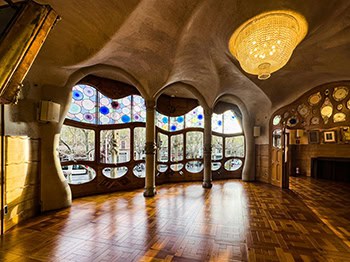
1. Antoni Gaudí’s Casa Batlló
Located in Barcelona, Casa Batlló exemplifies Art Nouveau with its natural forms and intricate patterns. Gaudí used curved lines and organic shapes to create a unique, flowing interior.
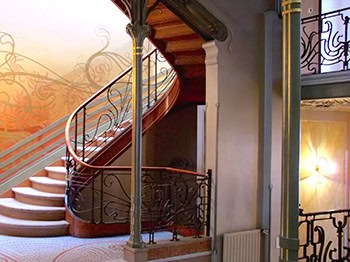
2. Victor Horta’s Hôtel Tassel
Hôtel Tassel in Brussels is renowned for its organic motifs and floral patterns. The interior features smooth curves and stylized forms, showcasing the essence of the art style.
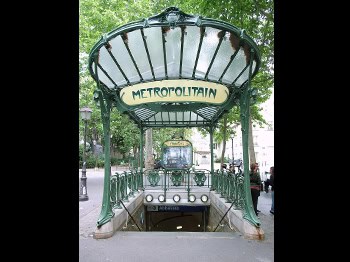
3. Hector Guimard’s Paris Métro Entrances
Guimard’s Métro entrances are iconic examples of the art’s architecture. The noodle lines and female figure motifs make these entrances more than just functional; they are decorative art pieces.
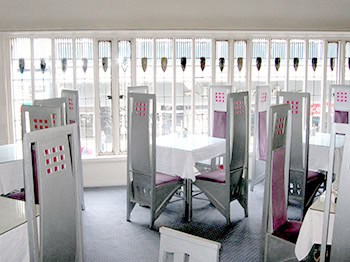
4. Charles Rennie Mackintosh’s Willow Tea Rooms
Mackintosh’s design combines geometric designs with organic motifs. The Willow Tea Rooms in Glasgow exemplify how this art blends different art forms into a cohesive whole.

5. Louis Comfort Tiffany’s Stained Glass
Tiffany’s stained glass windows and lamps are renowned for their intricate patterns and use of floral designs. His work brought the beauty of the art into homes and public buildings.
What Is Art Deco Interior Design?
Art Deco is a modern art style that emerged in the early 20th century. Geometric shapes and luxurious materials characterize it. Unlike Art Nouveau, which drew from natural forms, this art focused on streamlined forms and bold colors. The style celebrated technology and modernity, featuring clean lines and geometric patterns.
The Beginning of Art Deco
Art Deco began in the 1920s, influenced by the Exposition Internationale des Arts Décoratifs et Industriels Modernes in Paris. It moved away from the ornate styles of the past, opting for angular shapes and modern materials. This design movement was shaped by advancements in modern technology and the advent of mass production.
Art Deco Today
Today’s Art Deco has evolved but maintains its core principles of streamlined forms and geometric designs. Contemporary decorators use its elements in furnishings, architectural style and graphic designs. The influence of this art can be seen in modern art style trends, including Solarpunk themes and streamlined forms.
5 Examples of Art Deco Interior Design
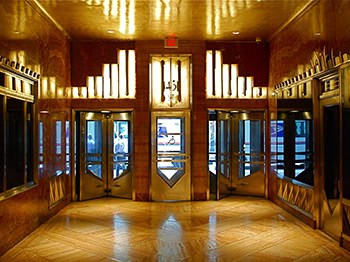
1. Chrysler Building Lobby
The lobby of the Chrysler Building in New York City is a quintessential example of Art Deco architecture. It features geometric patterns, luxurious materials and a bold color scheme.
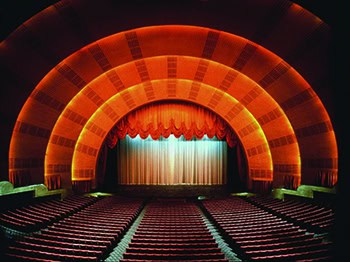
2. Radio City Music Hall
Radio City Music Hall embodies the art style with its angular shapes and streamlined forms. The interior design uses brassy themes and horizontal lines for an elegant look.

3. Eltham Palace
Eltham Palace in London showcases the art with its clean lines and stylized forms. The mustard yellows and soft blues create an inviting, modern space.
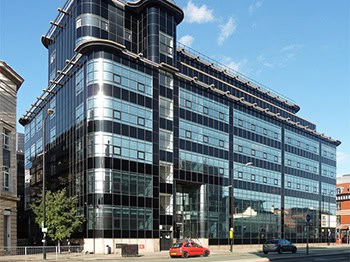
4. The Daily Express Building
This Manchester building highlights the art’s geometric forms and rectilinear shapes. The building, constructed before World War II, is remarkable for its timeless, avant-garde appearance.
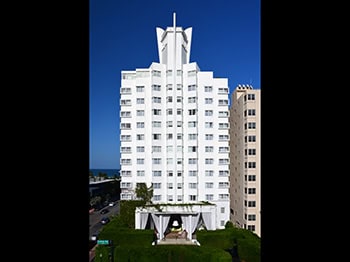
5. The Delano Hotel
The Delano Hotel in Miami embodies the elegance and glamor of the art. Its decorative objects and furniture pieces feature sharp angles and geometric patterns.
What’s the Difference Between Art Nouveau and Art Deco?
While Art Nouveau focuses on organic forms and natural materials, Art Deco emphasizes geometric shapes and modern materials. Art Nouveau’s design elements are characterized by floral lines and sinuous curves inspired by forms of flowers and nature. Art Deco uses straight lines and angular shapes, often incorporating modern materials like chrome and glass.
Art Nouveau draws heavily from ancient cultures and Japanese ukiyo-e prints, showcasing detailed, ornamental styles. On the other hand, Art Deco celebrates the machine age and modern technology, featuring bold graphic designs suitable for a contemporary lifestyle.
FAQs
Is the 1920s Art Deco or Art Nouveau?
The 1920s is predominantly associated with Art Deco. This period saw the rise of streamlined forms, geometric patterns and luxurious materials.
Is The Great Gatsby Art Deco or Art Nouveau?
The Great Gatsby is most associated with Art Deco. The novel and its adaptations feature this period’s bold colors, geometric shapes and luxurious lifestyles.
Can You Mix Art Nouveau and Art Deco?
Yes, you can mix Art Nouveau and Art Deco. Combining organic motifs from Art Nouveau with the clean lines of Art Deco can create a balanced style that feels both lush and modern.
What Transitioned from Art Nouveau to Art Deco?
Technological advancements and a desire for a more modern aesthetic influenced the shift from Art Nouveau to Art Deco. The focus moved from natural plant life and organic shapes to geometric forms and industrial design.
Deciding Between Art Deco Vs. Art Nouveau Interior Design? Visit Coburn’s Kitchen & Bath Showroom Today
Recognizing the importance of Art Nouveau and Art Deco can transform your interior spaces, adding unique charm and sophistication. Choosing between these interior design styles can also significantly shape your space’s aesthetic and character.
At Coburn’s Kitchen & Bath Showroom, we offer expert advice and a wide range of products to help you achieve the perfect look. Whether you’re drawn to organic motifs or geometric designs, we have the solutions for you.Visit a Coburn’s location near you to bring your dream interior to life.
